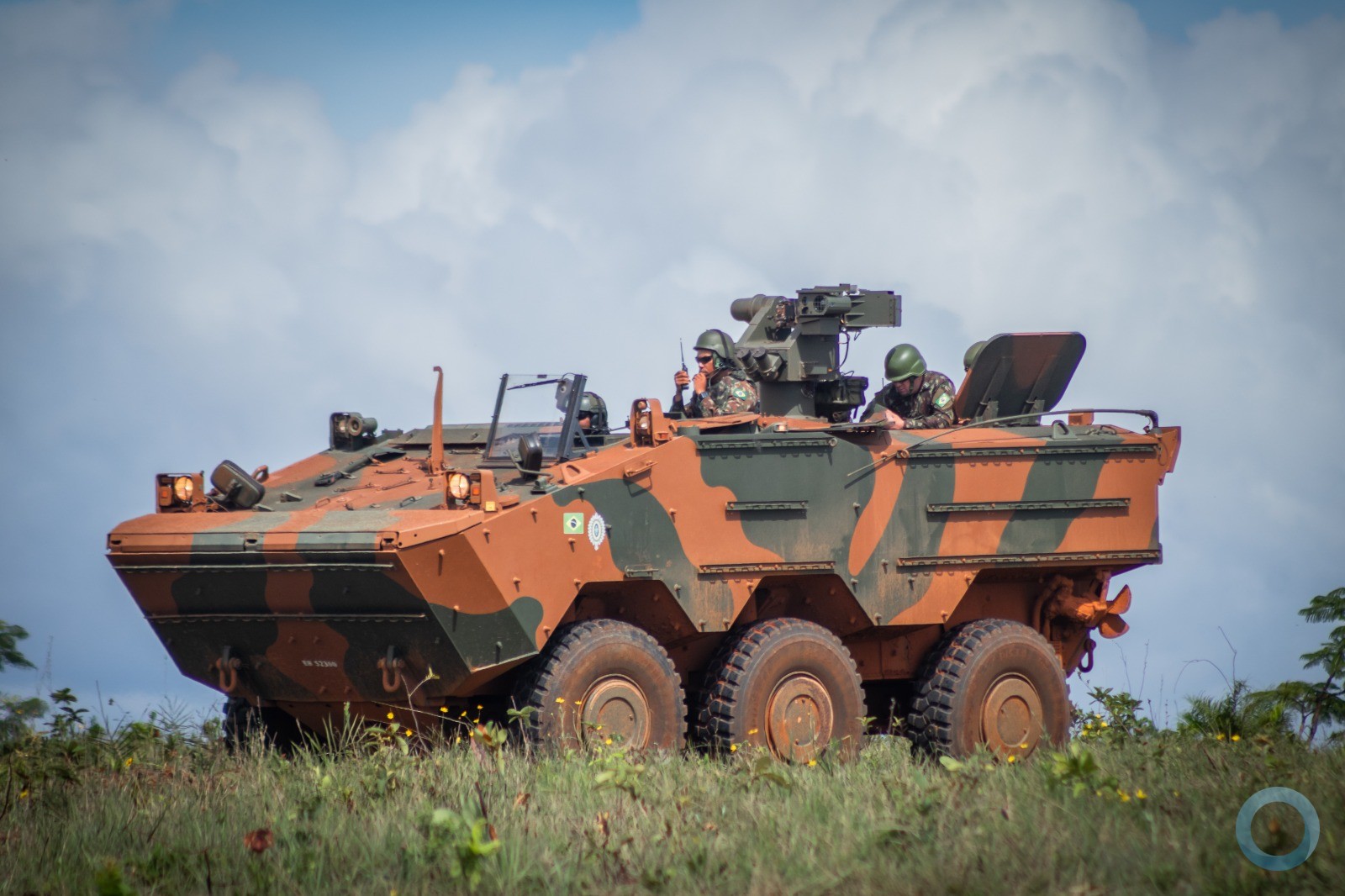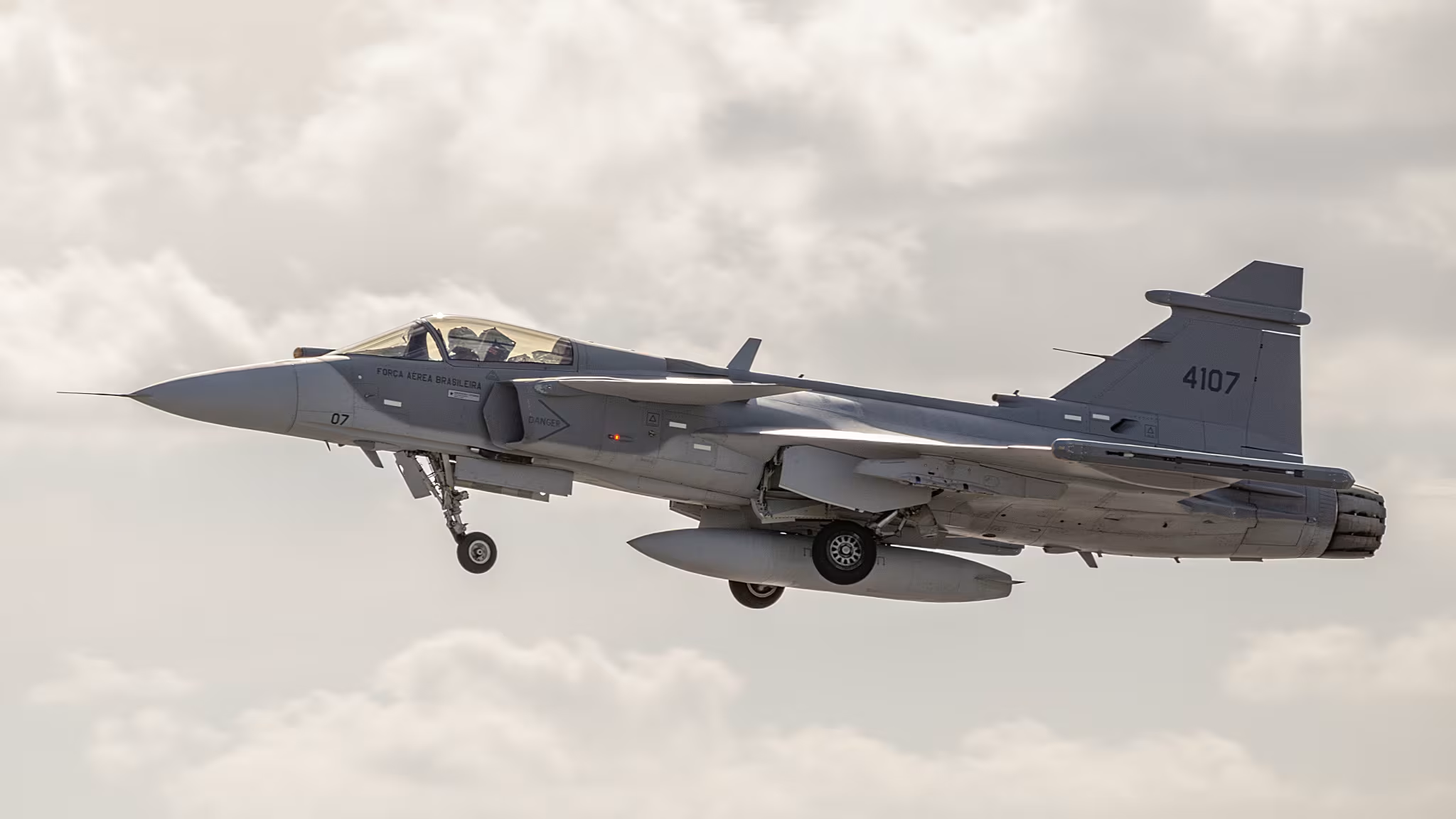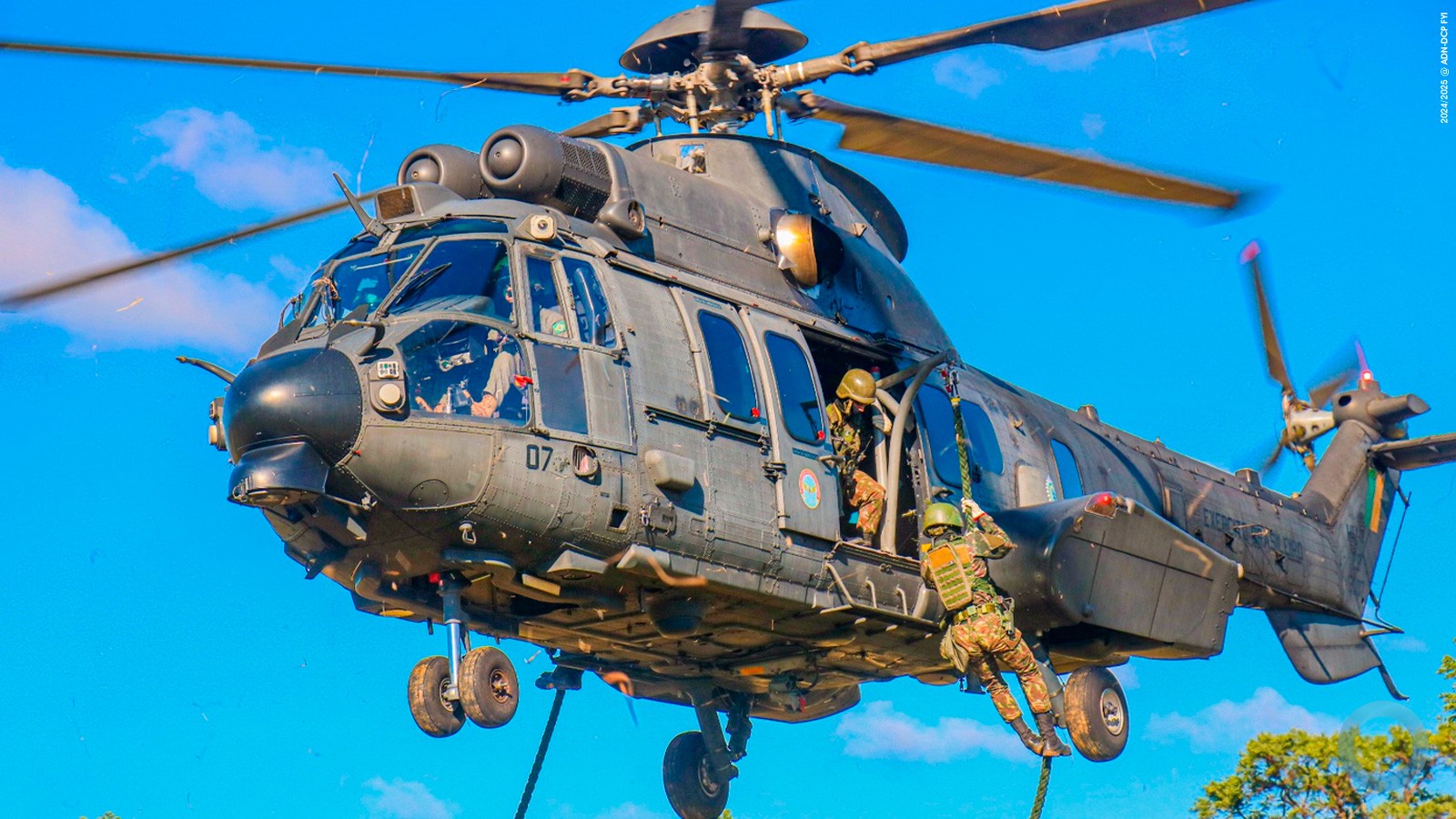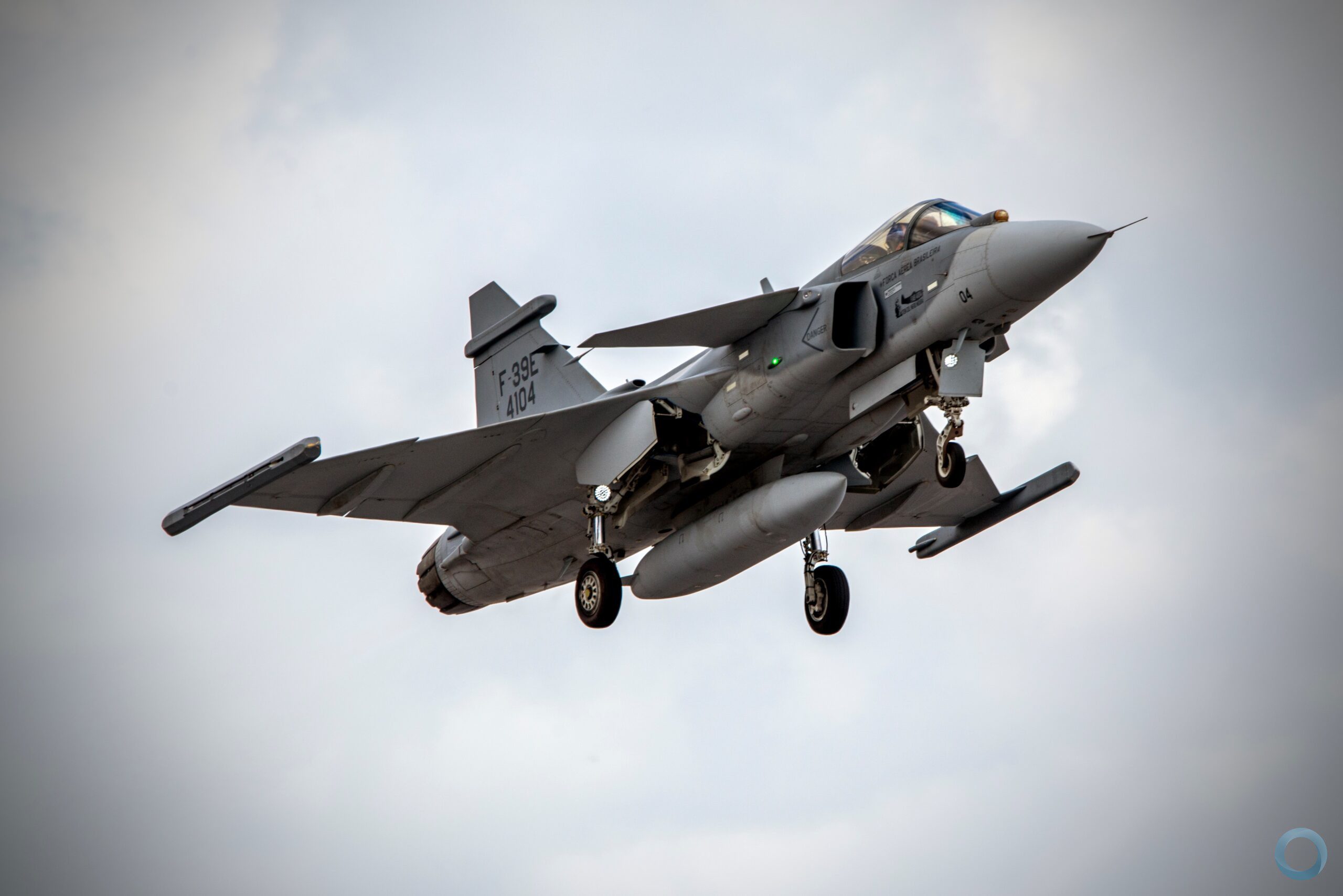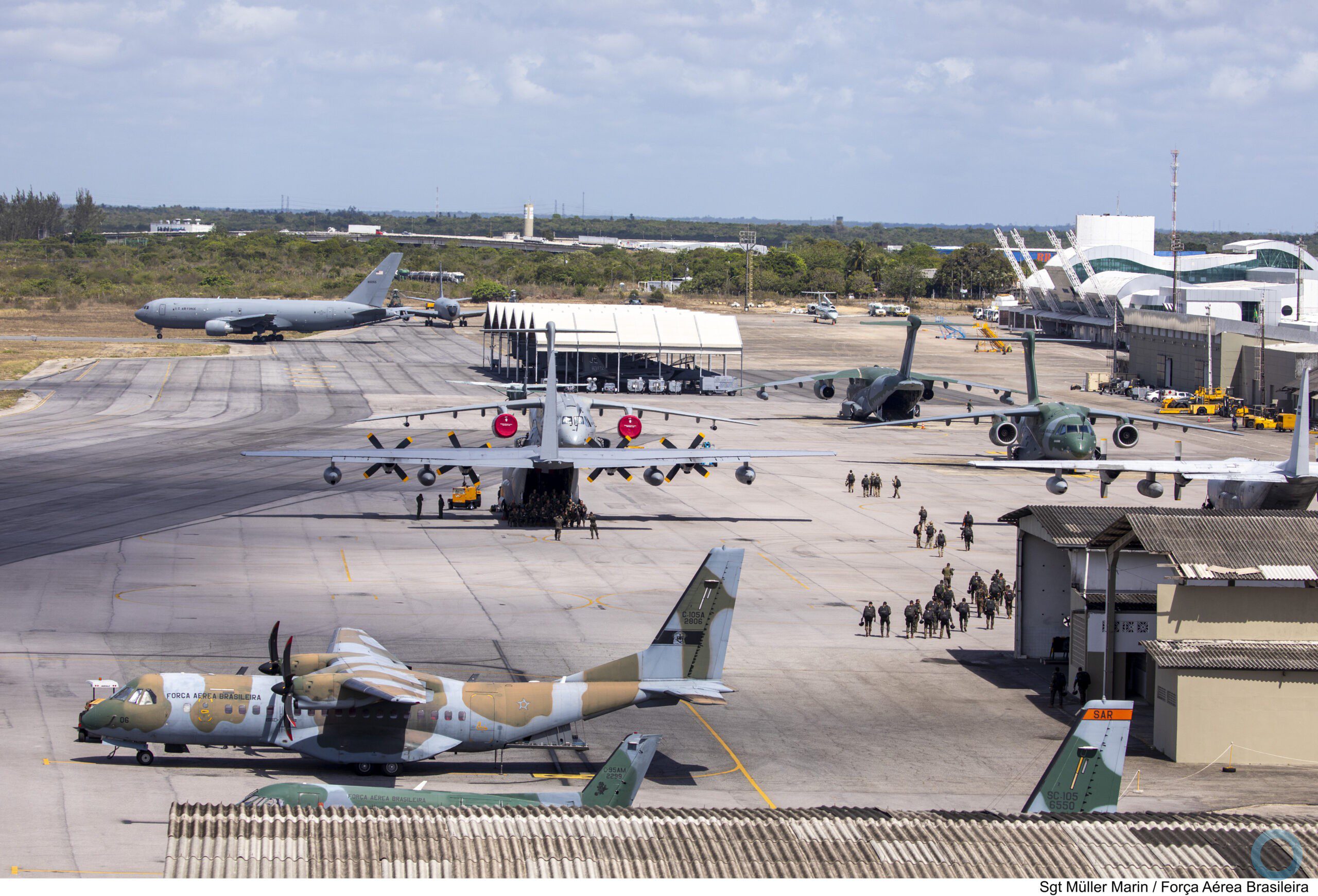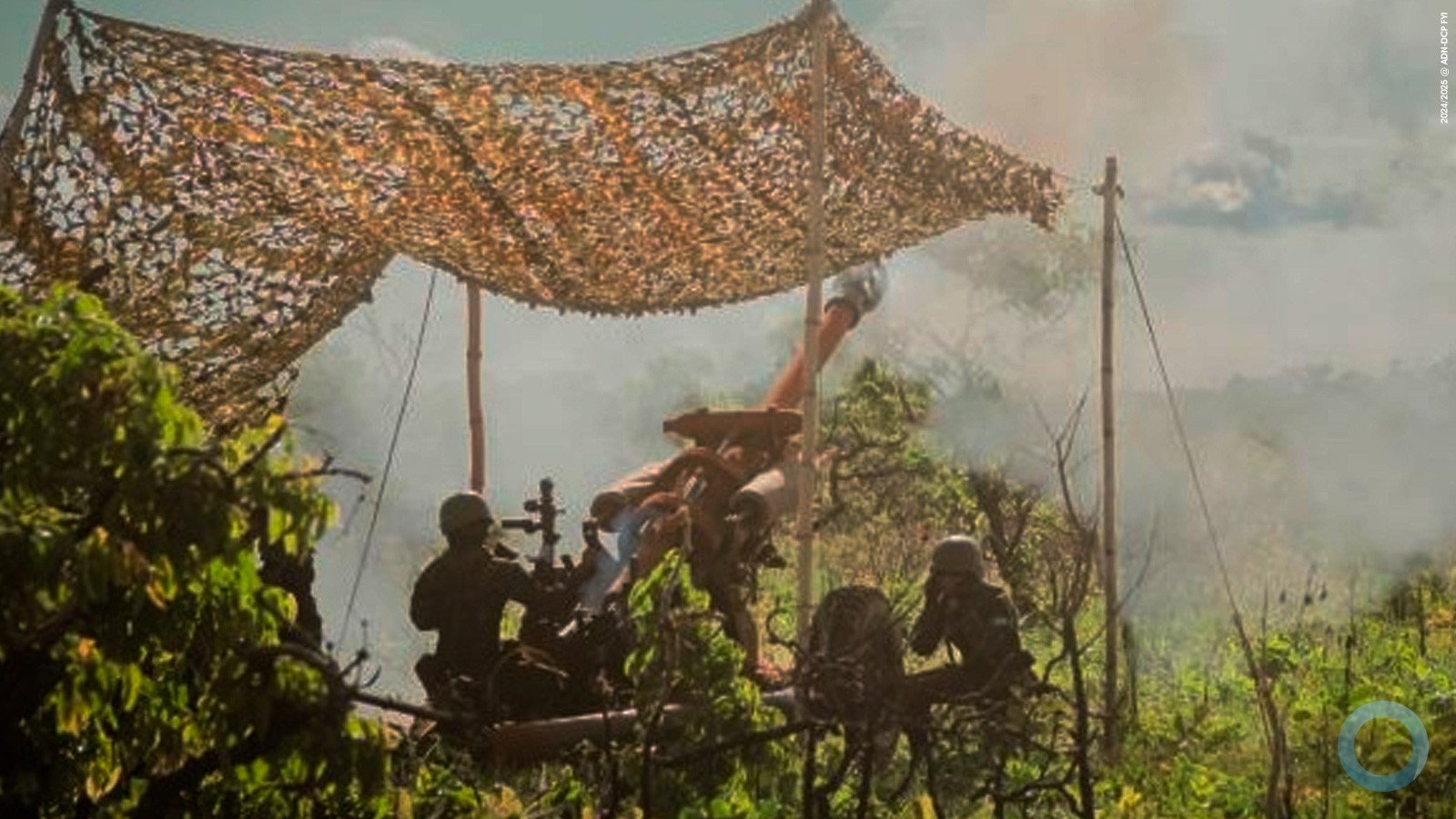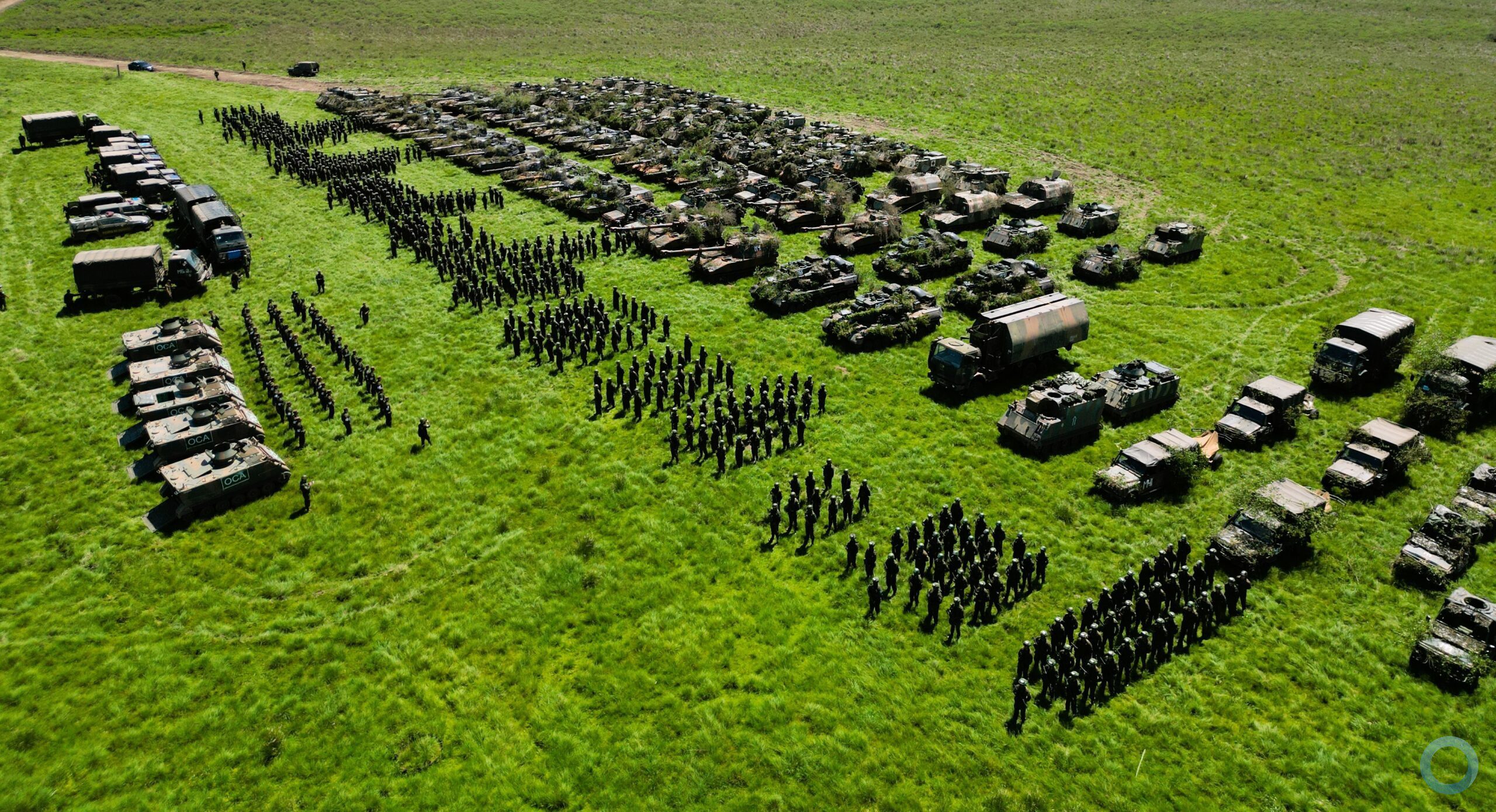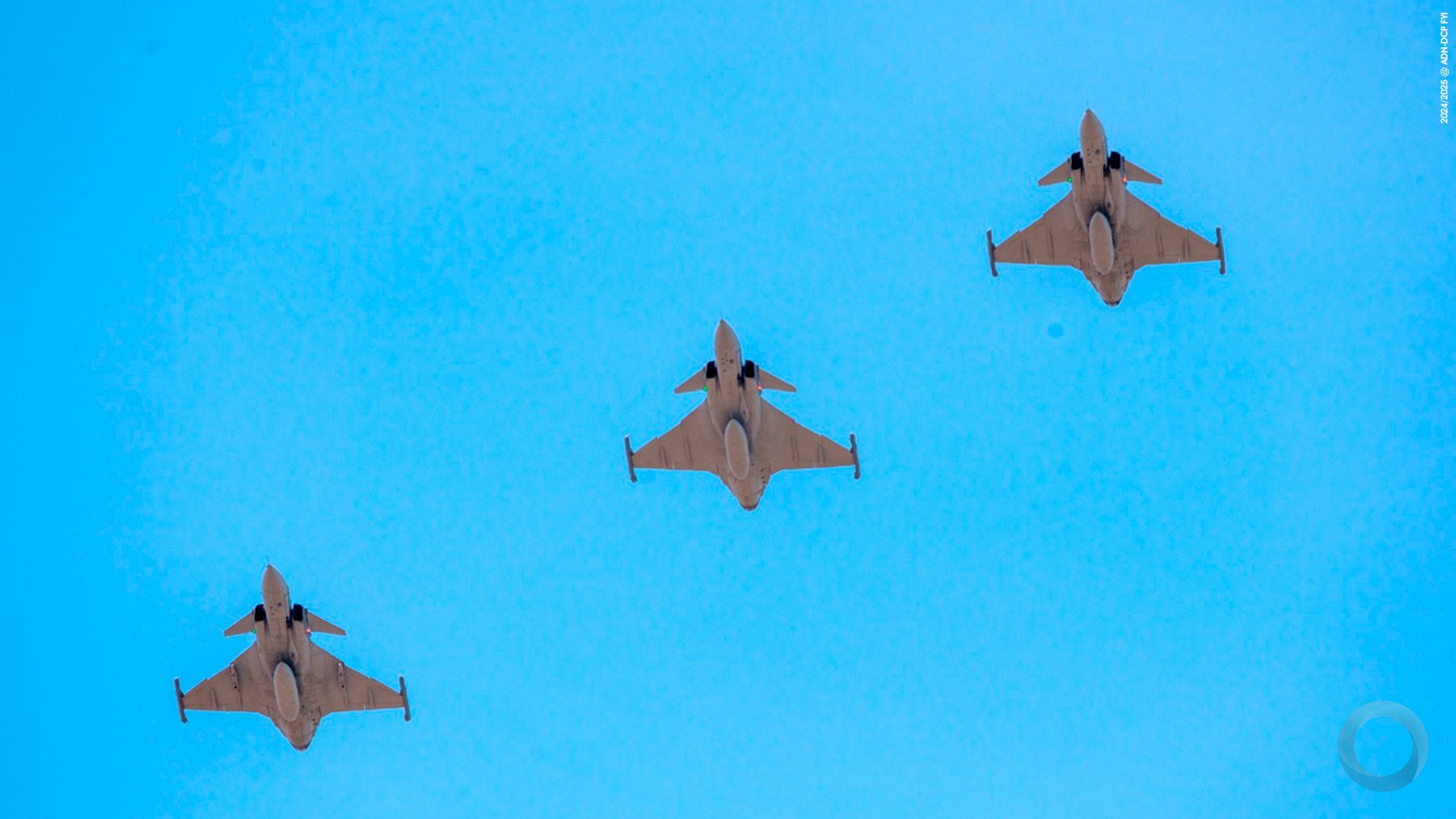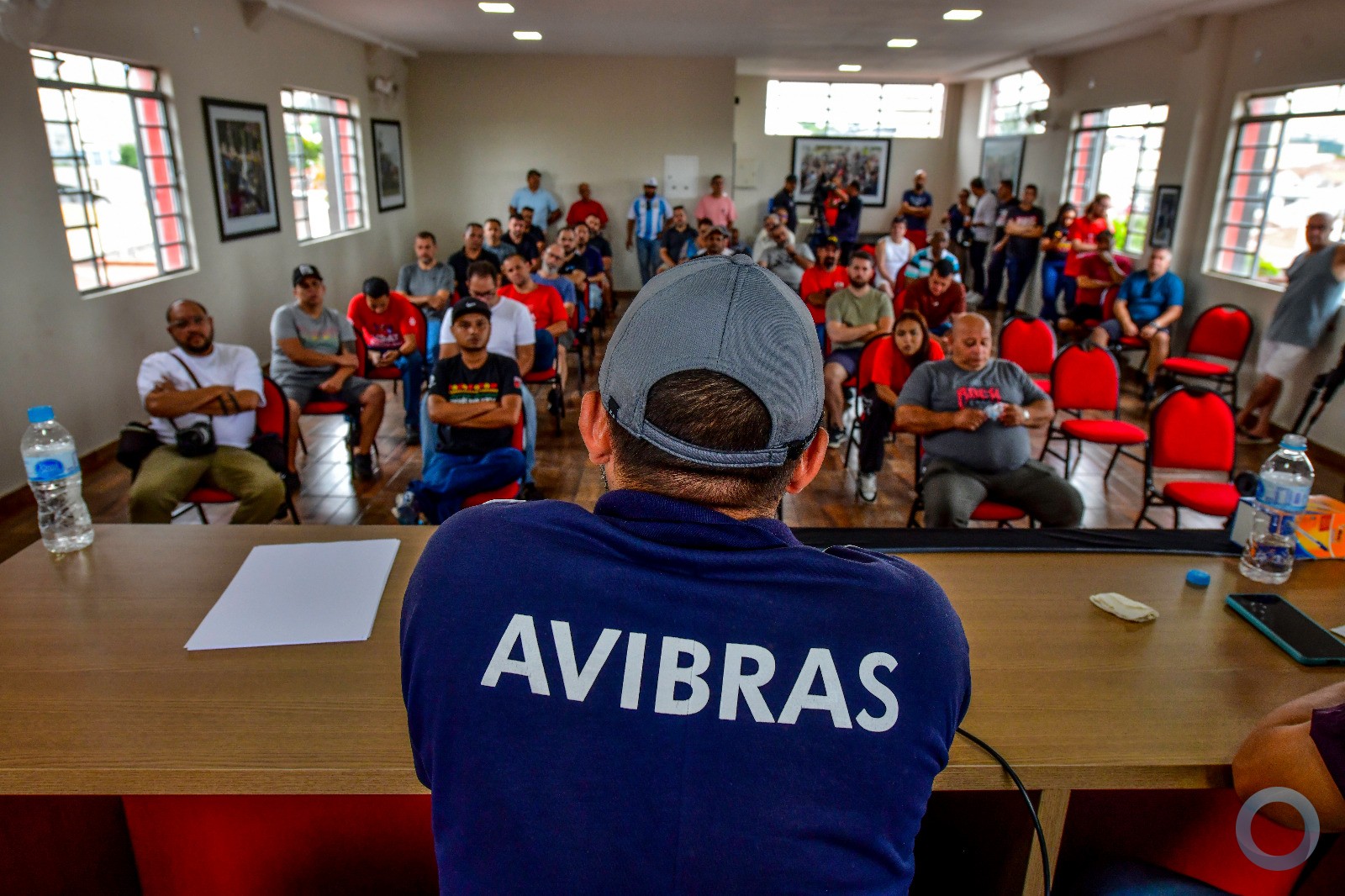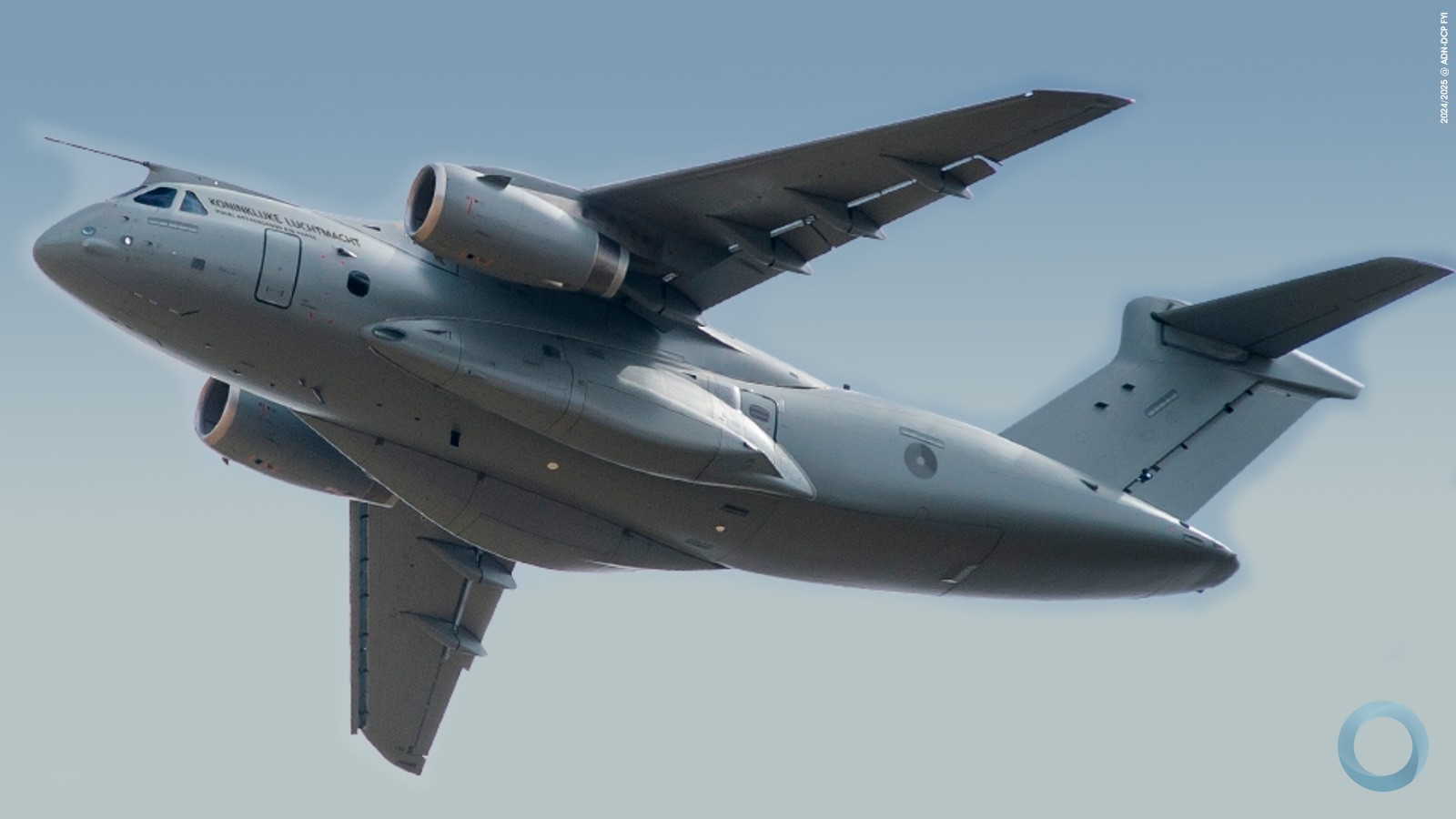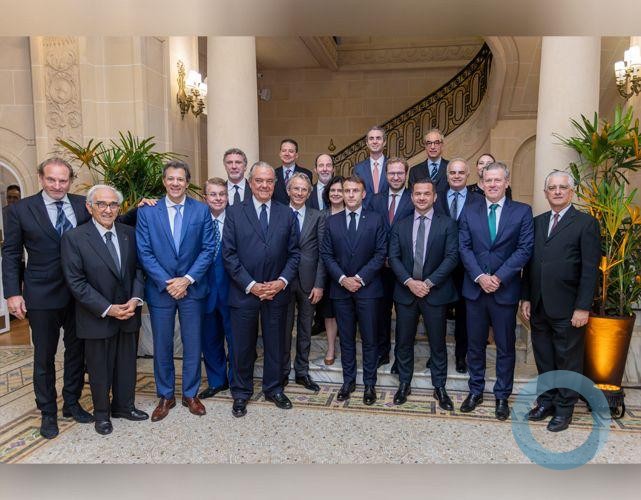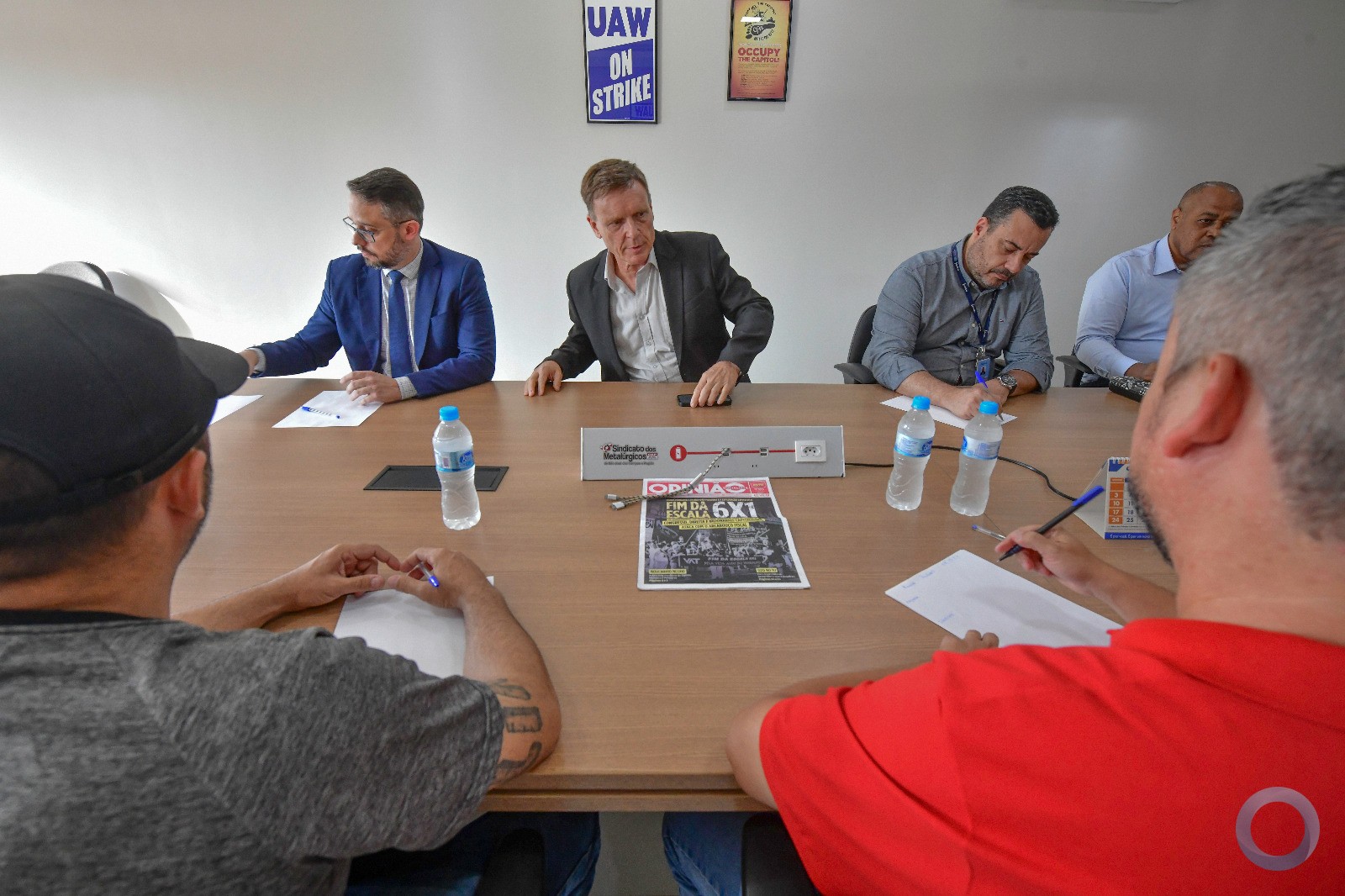


A ticket to the future
by Vianney Riller, Jr
Aerospace Analyst / Test Pilot
Text in portuguese – Gripen uma passagem para o futuro Link
Eddy De La Motte’s presentation on July 11, in Farnborough, UK was the penultimate piece in a puzzle that I began to complete since my visit to SAAB after the Aerospace Forum Sweden, on May 2012. My task, evaluate the Gripen. It should sound like an easy mission for someone who have made it so many times and with a lot of aircrafts. Actually it was not a walk in the park. I was not looking for a finished aircraft but for a being built Next Generation one. We hadn’t comfortable conversations all the time, cause it was my duty to ask questions that were hard to answer and I wasn’t there for a promo visit, neither for a booth simulator ride (where visitors have their mind made as if achieved their fighter pilot wings). I was there for the real thing.
The cards on the table
Too aggressive? Flight habits, maybe. I was eager to really go deep inside the Swedish competitor on the Brazil’s F-X2. Far from the booklets, advertising brochures and salesman presentations, I was looking for the most recent step aiming a concrete Next Generation multi-role fighter that could justify the self-titled Smart Fighter and Best Single Engine up to now. After lectures, simulator training and previous flight test records evaluation I would fly the JAS-39D, once the NG demonstrator was under the hangar roof exactly to incorporate one of these steps, the new SELEX Galileo AESA ES-05 Raven FCR (Airborne Fire Control Radar), the SAAB’s Joker to stay competitive in the top fighter game. This important “card” claim to provide a scan angle of ±100º and it is part of the MS-21 – Material Specification for the Gripen E/F.
But, why to fly the D? Cause I’d need to figure out where they are, to understand where they want to go. The Swedish aeronautical industry has achieved an interesting development level, what sounds quite impressive once they have been a non-aligned country. So, every single detail would be an asset to conduct a comprehensive analysis. I mean things like the development of a proper flight suit, the unique DFS – Dynamic Flight Simulator and the required 9Gs for 15sec training as pass/fail criteria for Gripen pilots; SAAB’s very own solutions to get advantages in a field where little details can result huge benefits. Besides the pleasure, these were some reasons to fly the D.


Sensitive questions
Before Farnborough, I was with Eddy de la Motte at the Malmen Air Base, Sweden and I went so far until I got “I can’t go further because it is more than a company secret” for an answer.
I’ve dialoging with aircraft industry around the globe and two of the major designers (US and Russia) have pursuing new elements to handle maneuverability. In this particular case, even projects that used canards previously, have doing away with them. So, Eddy, why canards?
“That are different reasons as why use canards, for instance low speed handling. You have an easy control as well in approach to land as in a low speed aircraft interception. In the other hand you gain more agile response in maneuvers. If you have a canard you create lift in the front of the aircraft, so you can change the attitude of the aircraft quickly what means a good element in turning. Another reason is the stability. The Gripen is an instable aircraft, again more agility, and we have three separate channels in the flight control system, that work independently and they compare the results of the situation of the flight and the pilot actions. If two of them find a strange parameter they disconnect that FCS with an abnormal indication. So, every time you have a dynamic control leading the surfaces to offer the best of the aircraft whatever the attitude, velocity or situation with the fastest response thanks to the canards”, defends Eddy.
Apparently, Brazil’s decision depends a lot on how many transfer of technology will be involved into the contract. Based on the well succeeded experience in Sweden, where Industry, Government and Air Force have joined forces to pursue the state-of-the-art aeronautical technologies, how could Gripen represent a considerable advantage to Embraer and Brazilian Air Force? De la Motte doesn’t hesitate to express his beliefs.
“That’s really why we as a quite small country (Sweden) can do this kind of product. It’s the ability to have a common goal. We work together, from the industry to the operator, and still to be able to understand the different commercials realities and roles, so in the initial design of the Gripen, the FMV and the Air Force were in the early evaluation, even before start to fly, in the simulator, and helped us to say this doesn’t works, that works, so it has been a continuous dialog over all these years. I believe this has created a very competitive and driver user friendly aircraft. This method resulted in a unique HMI – Human Machine Interface that took pilots’ needs as a priority.
About Brazil, if you look at the latest 40-50 years lots of aircraft industries have went out of business. Basically only one has entered the area, that is Embraer from Brazil, and that’s quite impressive. In terms of technology transfer, I don’t want to speak about our competitors, but in my point of view a partnership between SAAB and Embraer makes a lot of sense, once SAAB has discontinued commercial aircrafts design and production, but in the other hand master supersonic jets. So, both have a chance of a perfect deal where one can fill other one’s gap. We are not competing anyway, we are complementing each other. If you look all over the world basically very, very few technology transfer projects have succeeded or even happened. I can dare to say we’re probably the only one. We do it for example in South Africa, and we’re not talking about how to rivet, how to bush metal, how to lay composites, we’re talking about transferring technology in capability, how to design the aircraft, how to modify the aircraft, how to integrate your weapons, how to change the human machine interface. If you can do all these things you become independent”, states Eddy.
Some slides presented in Farnborough in the s

But, even with a low RCS (a strength point of the current Gripen C/D), the design changes purposed for the NG do not walk into the direction of a stealth geometry fighter. Have I hit SAAB’s forecast Achilles’ heel? Eddy says no!
“First of all, we don’t really believe in the total stealth value, especially if you consider the current stealth fighters in service, their technical problems and unbalanced cost-benefit. If you look at the spectrum(¹), stealth means as maybe couple of millimeters of the Wide Spectrum Combat, which is about a half of a meter if you go on infrared, radar, high frequency (…). What we try to achieve is a balanced design that let us stealthy enough over the all the spectrum, not as others being stealth in a very, very narrow spectrum. It’s really hard to go in details on this; what we’ve done, what kind of methods we’ve using, because it is not only a company secret but a national secret as well”, finish the VP, Head of Gripen Export.
Comparisons, endless comparisons…
Around the world, the usual F-X competitions’ way to choose a new fighter aircraft is to compare the performance of the plane currently in service with the contestants in different roles, which suggest being the natural method to establish a real upgrade of your tools in order to face your needs. Present days’ reality has inputted new criteria in these evaluations. Yes, the performance is still important but the technology transfer, political and global scenario, common joint operations and coalitions, the way the war has moved and the huge impact of the economic challenges have affected strongly any decision. The interdependence of these aspects is undeniable.
What does it means? Could an aircraft with a weak point in a kind of role, be evaluated most suitable than another with a better performance? One clue to answer this question is the fact that is a rising consensus in all Air Forces: operating costs are more important than acquisition costs.


If you join this issue with the “upgrade factor” – a capability to incorporate new technologies in the original project or even morph from it, in order to stay capable to fulfill the expected missions – you’re very close to figure out the whole thing.
Suddenly, while writing this public (and hope friendly to the reader) resume of my analysis, I remembered a brief encounter with an acclaimed editor of an important media group, during a barbecue in Sweden. In that occasion, he was interested about my recent analysis on a twin engine fighter that is considered a well succeeded case of constant upgrading. From aerodynamics to targets’ neutralization, through FCS (flight), FCR (radar) and HMI (human-machine interface), “intelligence” is definitely the main key. Under a pilot perspective this word means safety, situational awareness, reduced workload and accuracy. Intelligence seeking is an ordinary goal to all industry team; however, some of them have made aircrafts smarter than others.
Gripen gathered SAAB’s knowledge and propose a very own way as a response to the present challenges. Even against richest corporations, the Swedish fighter has entering F-X contests around all over the world with creativity and innovative solutions, aiming to keep competitive and survive into the air combat (I mean, industry combat), a game where, like in the air, there are no points for second place.




Gripen’s operational employment has produced interesting doctrines and tactics, which feed industry with relevant data and has as a consequence new keys (hardware, software and integration) to deal with different threats. Gripen industry team has been achieving significant results under reduced costs.


Strong arguments
No one has more flattering adjectives for a son than a father, but in this case, even being a great honor for me to meet the first pilot to fly the Gripen, Stig Holmström, was not a passionate description of the flying qualities of the half-lion-half-eagle Swedish jet, but the “logic” employed on the “equation”, as SAAB use describe the evolution of its fighter, that got me impressed. Yes, it is pretty agile, pleasant to fly, has friendly interfaces as Stig told me. I did all maneuvers recommended by the experienced pilot in order to explore the aircraft envelope. But the “iPhone App” way of thinking was the boldest chapter of a weeklong visit. Similar to a smartphone, this concept come from a split avionics architecture, where Flight Critical Systems are separated from the Tactical. This way, you can make changes, adaptations and improvements in the Tactical avionics without interfere with the aircraft flight characteristics and control systems.
Besides the Swedish innovative way of thinking, the method again calls for other kind of innovations, the technology transfer and the business model, once each user can develop their own Mission Critical applications, share each other and continuously upgrade them. SAAB claims to have putted into the high performance fighter jets market a unique asset: independence. This kind of freedom allows users to integrate a huge range of weapons from several providers keeping independent from eventual importation limitations or embargos.


A definitive point in favor of the Gripen is its HMI – Human Machine Interface. The “two floor” throttle lever with a jumping-cursor-between-displays-and-target-selection joystick on the top is a good example of a very own solution, that with the stick functionality present a rational and efficient HOTAS operation. Once a certain stick position is hold the FCS assumes the intention of the pilot and keeps the aircraft at the attitude and heading. Pedals (that could be carried in the trunk, so little are used) can do quite similar to change the flight direction. The only force that is perceived by the driver is the soft stop and the hard stop of the complete course of the stick. No force feedback (but a lot of beeps!) and no trimming action required.
Agile! Yes it is. It is not only the low RCS (Radar Cross Section) the advantage of being a small fighter. Gripen has pretty agile responses and turns very fast in a small radius.
The roll rate about >250º/sec is really effective for a quick Split S, useful in a dogfight, as well to successive complete 360º, useful for nothing, just for pilots’ fun. Gyroscopic maneuvers are not the strong point due to the small rudder, what doesn’t mean big deal, once that is all a question of control of the part of the egg(²) you want to keep the fight, and well trained pilots with good tactics ever keep the fight where they have some advantage.
Sensors and Net Centric capability process the information gathered from different sources, mix and show it on the three large-area color head-down multi-function displays and on the wide-field-of-view HUD, giving to the pilot an effective situational awareness. As I flew the D, I won’t go further on the current radar, but wait for the new ES-05 Raven performance. The way that Gripen takes advantage of its information management architecture, have in the “Beaming Link” the basis of the main tactics used today. They are the subject of “The Hyena’s Game: How to Beat the King of The Jungle”, an article where I discuss about tactical achievements of Gripen’s operation and excerpts of my briefing with Björn Danielsson, a Flygvapnet (the Swedish Air Force) fighter pilot and Operational Analyst of SAAB Team.
However, the strongest argument to Gripen isn’t in the air. It rests over the universal reduction of costs and the all Air Forces’ mantra: “Do More With Less”, prayed over the economic uncertainties.


Gripen NG may have a flight hour cost bellow $5,000. This value is one-third to one-quarter of SAAB’s estimates for Super Hornet, Eurofighter, Rafale or F-35, its main competitors on a couple of running contests. Added to the fact of being very easy to fly and operate, SAAB calls one more economy on costs, the pilot conversion, once very few hours are needed to the drivers to achieve operational standards and readiness
The future
Gripen’s today thrust-to-weight ratio is about 0.96 and 1.44 in full afterburner. The intended increase of the thrust with the new engine F414G is about 33%, which doesn’t means an improvement to a 1.92 ratio, once the weight (mainly due to the new fuel capacity) will grow as well.
Following the SELEX Galileo AESA ES-05 Raven, the IRST Skyward-G (already presented during the Aerospace Forum Sweden on May) is coming, which represent a consolidation of the Eddy’s forecast: the increase of the passive target detection and tracking.
I tried to describe the Gripen’s present stage, what is not so easy, once the fighter has had great part of its scheduled upgrading anticipated and its run in different F-X competitions has been the fuel to make it faster. If you remember the beginning of this text, I said about the penultimate piece. What would be the last one to fill the big picture? I’ll tell you after my next flight in the Gripen F.
note:
(¹) The spectrum is the range of all possible frequencies of electromagnetic radiation. The "electromagnetic spectrum" of an object is the characteristic distribution of electromagnetic radiation emitted or absorbed by that particular object.
(²)The tactical egg is an imaginary bubble that represents all possible motions of an aircraft in a dogfight, showing the effects of gravity on the aircraft's maneuvering. Pursuit curves are determined by the angle off tail (AOT).









